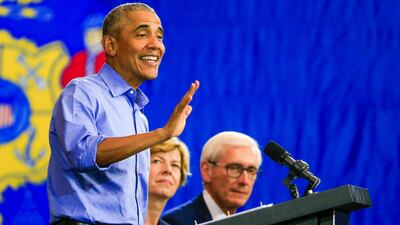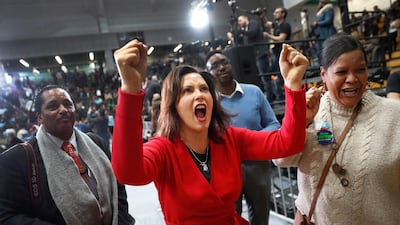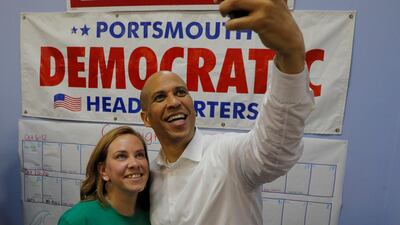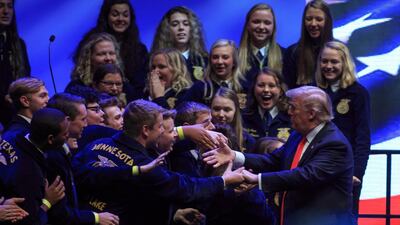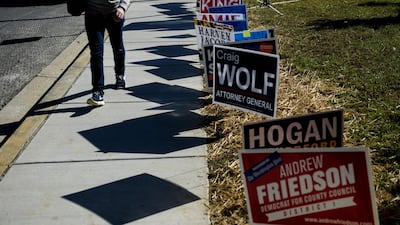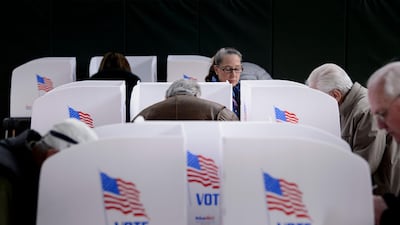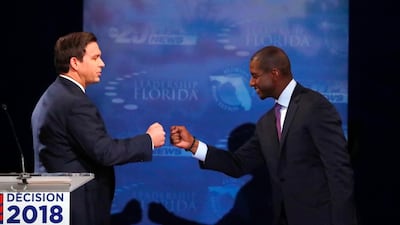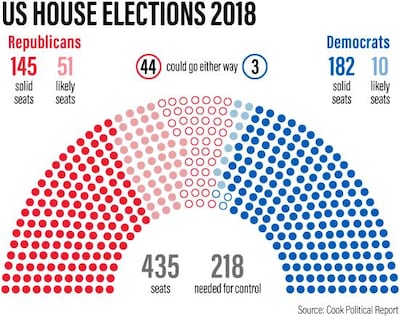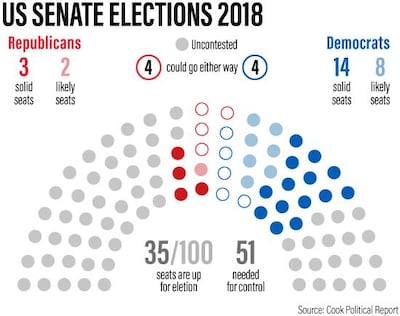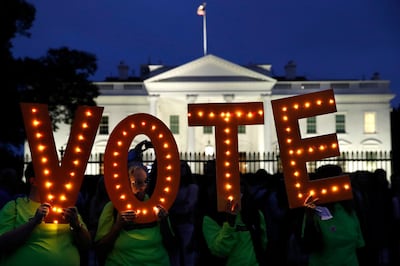Updates: Follow our live coverage of the midterms
Americans will vote on Tuesday, November 6, in what will be US President Donald Trump's biggest electoral test since he took office.
The US midterm elections are a particular feature of American democracy and have the power to embolden or derail an administration.
Below is everything you need to know about the 2018 midterm elections:
What are people voting for on November 6?
US citizens will be voting to elect congressional members. Congress is made up of representatives and senators.
The House of Representatives has 435 voting members. Thirty-five seats in the Senate are being contested.
Voters in most US states will also elect a state governor.
How does Congress work?
There are 435 voting members in the House of Representatives, elected for two-year terms. The number of seats per state is allocated according to population size.
There are 100 seats in the Senate, with each state receiving two seats. Senators serve six-year terms and a third of the Senate is elected every two years.
Together the House of Representatives and the Senate make up Congress, which is the legislative body of the United States.
The mix of term lengths and number of seats per state is designed to ensure the system is dynamic enough to change frequently and that small states are not dominated by larger states and vice versa.
Why are the 2018 midterms important?
To pass a bill it must be approved by both the House and the Senate. The Republicans have a majority in both chambers of Congress, but that could all change on November 6.
If the Democrats gain a majority in either the House or the Senate, they will be able to block Mr Trump's legislative agenda.
In order to make a law, the executive (the presidency) must work with and through the legislature (Congress). But if one of the two chambers of the legislature is politically opposed to the president's party, it is incredibly difficult to pass laws, often resulting in gridlock.
This is something Mr Trump's predecessor Barack Obama struggled with after the midterms in his first term.
__________
Read more:
Women are leading the charge in US midterms
Democrats are embracing diversity ahead of the crucial midterms
Rashida Tlaib on course to become first Muslim American woman in Congress
__________
A win for the Republicans would mean maintaining control of one or both houses of Congress. It would allow Mr Trump to strengthen his hold on the US political system, reshape the Republican party in his image and embolden him to silence the Robert Mueller investigation into allegations of collusion with Russia.
It would also provide Mr Trump with bragging rights over Barack Obama and Bill Clinton who both suffered heavy losses in midterms.
The race for the House of Representatives
This is the race which could have the biggest impact on the state of US politics. For Democrats to take the house from Republicans they will have to win 23 more seats than they did in 2016.
The election is far more dangerous for Republicans than it is for Democrats, according to The Cook Political Report. There are 44 Republican toss-up seats – where either party has a good chance of winning – but only three Democrat toss-up seats.
There are 51 Republican and 10 Democrat "likely" seats.
The Democrats are likely to win a seat in New Jersey and three seats in Pennsylvania. Eleven more seats held by Republicans could also go to the Democrats.
This year, there are a record number of female candidates in House elections. More than 200 female House nominees will compete in General elections. More than half of the women who competed in state primaries won their district.
Many say this surge is due to groups like Emily's List, which has built an infrastructure to recruit more candidates and get them elected. Controversy over President Trump's treatment of women has also been blamed for inspiring women to run.
The race for the Senate
Out of the 35 seats up for grabs in November, there are eight that could go either way.
The Democrats only need to take two seats to retake the Senate, but there are only nine Republican seats up for grabs this year, most of which are expected to stay that way.
The Democrats' best chances of taking control of the Senate are in Arizona, Nevada, Texas and Tennessee.
Governor races
As well as congressional elections, 36 out of 50 states will be electing governors. Of the 36 governors, 26 are Republican.
Governors speak for a state, oversee the passing of state laws and can appoint judges. They also play a big part in fundraising and drumming up support for presidential elections.
New governors in midterm elections could significantly influence presidential campaigns in 2019 and 2020.
Who is going to win?
This election is likely to be seen as a referendum on Mr Trump's presidency so far.
Historically, the party with the president in the White House has lost an average of 32 seats in the House of Representatives and two seats in the Senate at each midterm election.
The Democrats' base is likely to be energised by the appointment of Brett Kavanaugh as a Supreme Court judge. Mr Kavanaugh's faced accusations of sexual assault and his presence in the court tilts its balance to the right.
November's opportunity to break the dominance Republicans have over all three branches of government is likely to be seized upon by a motivated Democrat base.
Mr Trump also has low approval ratings, meaning many of those who voted for him in 2016 might not do the same in 2018.
The president, however, is one of the most popular Republican leaders in history among his party. A significant tax reform bill, extensive deregulation and protectionist policies are popular among his base.
__________
Read more:
Both US parties see positives from Kavanaugh case
Hussein Ibish: Kavanaugh's confirmation is just the start of this sorry story
